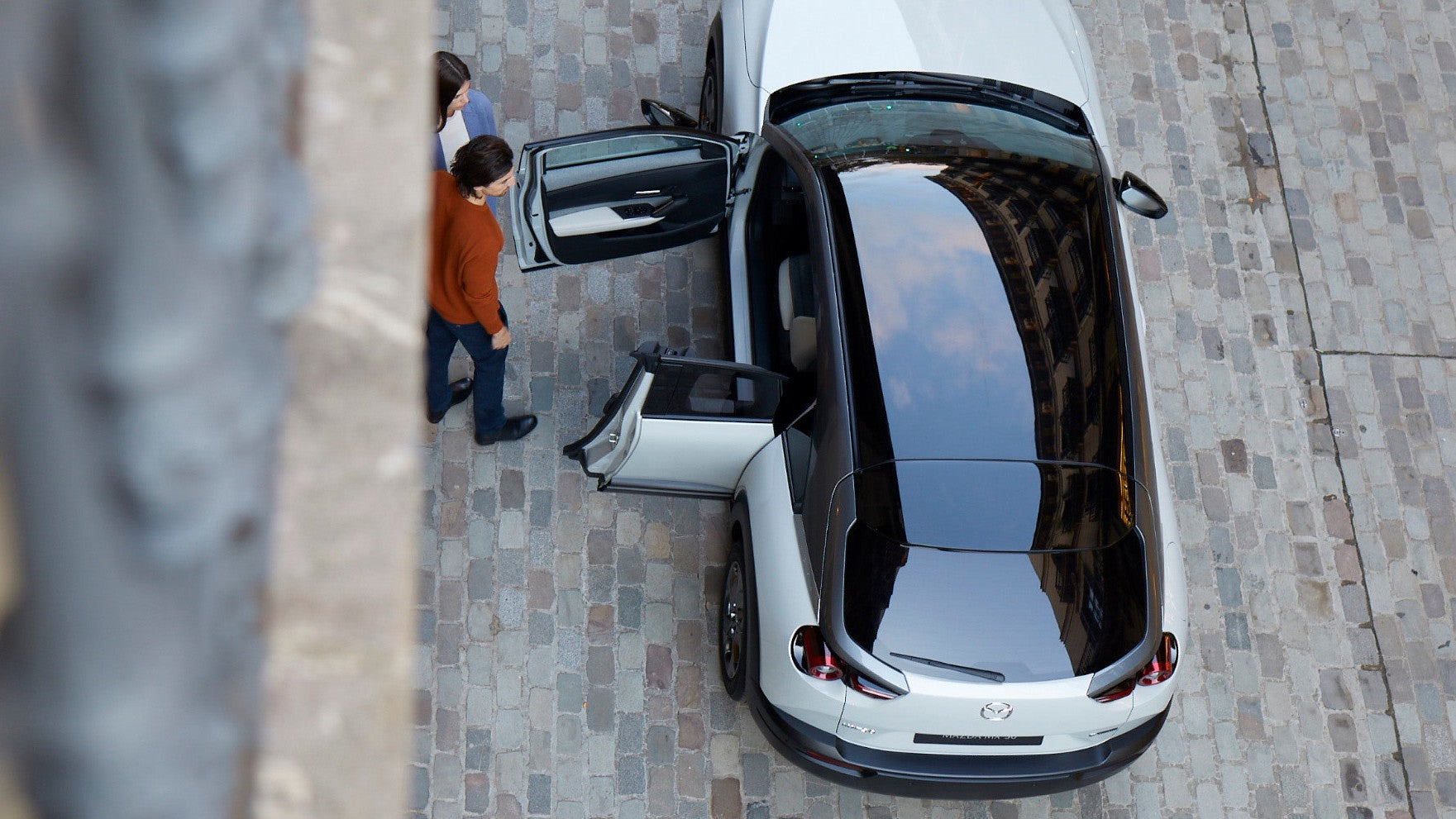Mazda Admits You Need Two Cars To Justify MX-30 Ownership, Provided The Second Isn't Another MX-30
Mazda's desperate rationale isn't making its first-ever EV sound any more compelling
Mazda's first fully-electric vehicle, the MX-30 crossover, has a range of 100 miles. For now Mazda's only importing 560 for sale in California, a state that happens to be quite large. However, California also mandates that manufacturers sell cars without internal-combustion engines as part of their fleets, leading to the suspicion that the MX-30 is merely a compliance car and the company never expected to sell many examples. I subscribe to this notion, but I also think Mazda's making its lack of confidence in the MX-30 exceedingly obvious with its latest excuse.
Speaking to Automotive News Canada, Mazda national manager Mark Peyman described the kind of customer the company is envisioning would make for the ideal MX-30. That is, someone who already owns another car.
"We come to market with a vehicle like the MX-30 that has a smaller battery, a smaller footprint environmentally and still meets the range needs of 80 per cent-plus of the consumers that will probably use this," Peyman said. "We've found through research that many of these individuals have additional cars in their households that are for longer range."
The MX-30 becomes much more appealing, the logic goes, if you have a second car for long trips. That's not necessarily wrong, but the trouble is that the typical consumer — at least on this side of the Atlantic — never really needs to consider overall range when car shopping. So almost any car could be someone's only car, barring something obscenely expensive that a single-car owner isn't going to entertain anyway.
The rest of Mazda's justifications for the MX-30's limited range pretty much read as follows:
-
The average daily commute is roughly 32 miles round trip, at least here in the U.S. 32 goes into 100 three times, leaving you enough juice left to go to the end of your driveway, but perhaps not back up if you live in the sticks.
-
The MX-30's range is a consequence of its smaller battery, which keeps its weight down relative to other EVs, thereby making it more fun to drive. This is something the typical American consumer values, at least judging by the number of RAV4s and Kia Tellurides I see on the road in the Northeast.
-
The MX-30's small battery also diminishes its carbon footprint, again something the public is very concerned about here in the U.S. (and I suspect Canada) considering our collective idea of responsible motoring is a "compact" pickup truck.
Now, it's easy to poke at how little sense the MX-30 makes from my desk chair, but I do not envy Peyman's job and I don't blame him for reaching here. This is as tough a sell as they come in North America, where roads are wide and highway travel is the way of life. The arguments about driving experience and appealing to more environmentally conscious consumers aren't without merit, either; I just doubt they'll sway the average shopper that considers their car an appliance.

Peyman strikes a better answer deeper into Auto News' story, saying that those customers that like the MX-30 but are particularly worried about range should wait for the "Powered by ROTARY" plug-in hybrid version:
"Step one is to focus on these urban environments and people that do want a more environmentally conscious choice with the full battery electric," Peyman said. "Step two, this [plug-in hybrid model] could conceivably be somebody's only vehicle, so it's just a step further out."
Fair enough. But then, of course, we're not in battery-electric territory anymore, so that's kind of a cop out.
The MX-30 starts at $34,695 including destination. Subtract the $7,500 federal EV tax credit from that and you're looking at $27,195, which is a bit steep to pass for a "cheap city EV." My colleague and world's foremost Smart enthusiast Mercedes Streeter reminded me that the Daimler-owned manufacturer tried to play to that slice of the market before the brand's U.S. exit with the Smart Electric Drive, but that car at least started at $23,800. It only had a range of 63 miles, which was probably acceptable to the average Smart buyer. Personally I find it hard to imagine driving a Smart any further than that in a day.
(Or at least I did, but I just asked Mercedes about the furthest she's ever driven a Smart in a single day, and she said 1,500 miles. I'm just weak, I guess.)
For Mazda's sake, I hope the MX-30 finds a small but loyal subsect of the EV market that has a second car for road trips and swears by their 100-mile crossover for short hauls. I also hope Mazda's working on another EV with a bit more mass-market appeal. Maybe better excuses, too.
